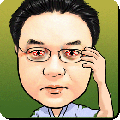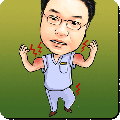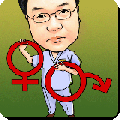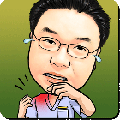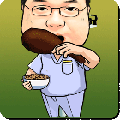The world is changing more rapidly than at any other time in human history. As our concepts of Western medicine have shifted in recent years, today’s public demands a more comprehensive approach from its health care providers. The reductionist method of referring each symptom to the domain of a particular specialist, isolated from the whole person, is being replaced slowly with more complementary forms of health care like acupuncture and Chinese medicine. We are beginning to look at each person as an integrated being. Health providers now consider dietary preferences, exercise regimens, the types of relationships the person is engaged in, as well as the particular symptoms that brought him or her into treatment in determining treatment strategies. I believe that eyesight is not an isolated phenomenon but is rooted in our totality. Our being includes our genetic makeup, the food we eat, our work environment and exposure to air borne toxins, as well as our belief systems about ourselves and our world. Each unique individual literally takes in the world through the senses, primarily vision. The way we see the world is, to some degree, a reflection of who we are. Our being is further reflected in the visual symptoms we manifest. The body does not work as a series of parts in isolation, but as a dynamically integrated living system. Every cell in the body has receptors for neurotransmitters, so in a real sense every cell is a nerve cell. We do not see with our eyes or think with our brains, but rather live in a “minding body.” This biological awareness of every cell is really the foundation of vision, the ability to derive meaning from patterns of electromagnetic stimuli we call light and to direct action based on this interpretation. The skin of the entire body is covered with tiny electric eyes known in Chinese medicine as acupuncture points. These points follow along the flow of energy streams called meridians. In Chinese medicine, when the meridians are flowing smoothly, there is neither pain nor illness. When blockages exist in the meridians, pain and illness result. Each acupuncture point is a window of heightened sensitivity close to the surface of the skin, providing the acupuncturist with easy access to the meridians to clear blockages. As vision problems are reaching epidemic levels in our society, the eye care industry has become a multi-billion dollar business. Its major tools such as glasses, contact lenses and eye surgery enter the lives of virtually all citizens of the Western world. In The Art of Seeing, Aldous Huxley wrote, “If everyone who had deficient vision had broken legs, the streets would be full of cripples.” Patients go to their eye doctors year after year with worsening eyesight. They typically are told that this is a normal part of the aging process and that nothing can be done to prevent visual decline. They may be put on a lifetime of medications such those diagnosed with glaucoma. The following are common examples of conventional treatment or advice where in fact definitive holistic measures could be taken to prevent vision from deteriorating. Eye care professionals increase their patients’ prescriptions year after year as needed, and explain that weakening vision is just part of aging, even in children. People with cataracts (which includes nearly all adults over the age of 65) are told there is nothing that can prevent the growth of cataracts and therefore to wait until the cataract “ripens” (gets more opaque) and then have it removed surgically. Patients with macular degeneration are told there is nothing that can be done, that they will most likely lose vision and, in some cases, go blind. Patients with early stages of glaucoma are either immediately placed on medication for a lifetime, or told to wait and see if the condition worsens. In the meantime, the patients are not told of any of the preventative measures that could be taken. Where is the much needed prevention, education and rehabilitation? There are numerous peer-review studies that show clearly that these eye conditions can respond to proper diet, lifestyle adaptations and nutritional supplementation, and that people can preserve their vision. As leaders in the complementary health care profession, acupuncturists and herbalists can readily expand their role into one of helping people maintain their invaluable gift of sight. Medication and surgery are sometimes necessary and, in acute cases, can preserve vision. The role of modern Western medicine in saving lives and vision is remarkable, a true blessing. But medicine as practiced today lacks the holistic and preventive emphasis that many times can obviate the need for surgery and medications. There are certain conditions such as macular degeneration for which conventional medicine has virtually nothing to offer sufferers. This is an excellent example of where holistic medicine should be at the forefront of treatment rather than at the backdoor.
INTRODUCTION TO CHINESE MEDICINE AND EYECARE
The human body is a complex, organic unit. Its tissues and organs are interrelated and mutually dependent. Therefore the health of the eyes, as the optical organ of the body, can influence and be influenced by any and every other organ in the body. Acupuncture has been successful in treating a wide range of visual conditions including glaucoma, cataracts, macular degeneration, optic neuritis and optic atrophy. The Western and Eastern medical approach varies in a fundamental way. Western medicine defines eye disease on the basis of the pathophysiological disease process (how “X” causes “Y”), and assigns a specific diagnosis to define the underlying pathology. Once this diagnosis is made, the treatment and medication are often the same for patients with similar diagnoses, regardless of differing symptoms. This approach can be very effective for acute conditions, but often falls short for ongoing chronic conditions where the cause or causes of the symptoms are elusive. In Chinese theory, every individual is viewed as unique. Chinese medicine looks for patterns of disharmony in a person to determine the relationship between “X” and “Y.” Healing does not depend on identifying how X causes Y, but on how X’s and Y’s are interrelated. Practitioners of Chinese medicine do not put labels on disease, but rather determine treatment based on the pattern of symptoms the patient manifests. According to Traditional Chinese Medicine (TCM), all diseases involving the eye are closely related to the liver. It is also understood that the eye is nourished by all of the internal organs in the body. The lens of the eye and the pupil basically belong to the kidney, the sclera to the lungs, the arteries and veins to the heart, the top eyelid to the spleen, the bottom eyelid to the stomach, and the cornea and iris to the liver. The Spleen and Stomach also control circulation in the eyes. Therefore an imbalance in any of the internal organs may lead to eye disease.
- Our experience and that of others indicates that visual health is a dynamic process including such considerations as: the type of work we do (90% of accountants are nearsighted while only 10% of farmers are nearsighted);
- lifestyle, which includes whether we smoke cigarettes, drink alcohol and coffee, exercise, attitude, etc.;
- adaptation to stress;
- computer use;
- what we eat as well as how well we absorb nutrients;
- health conditions;
- medications;
- genetics;

